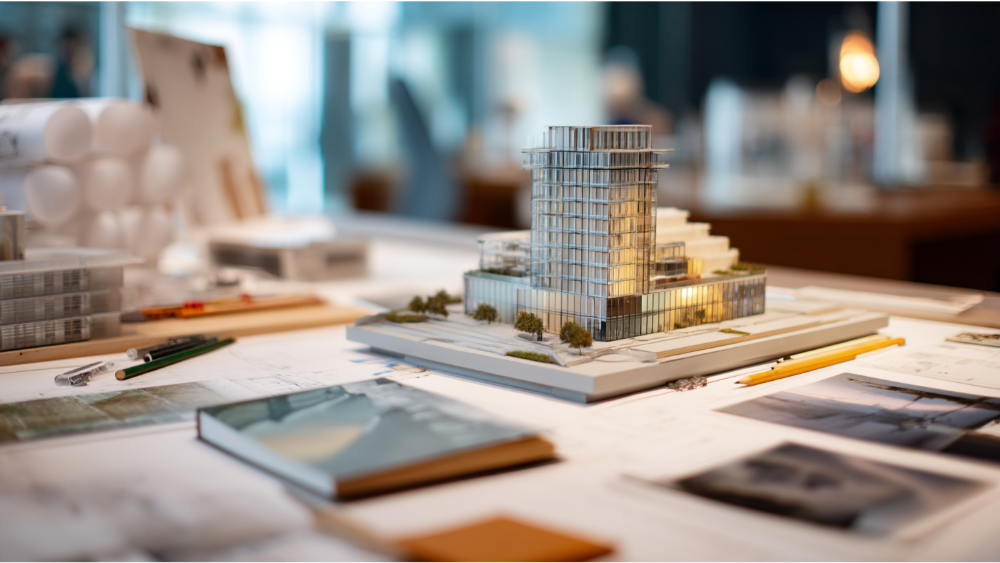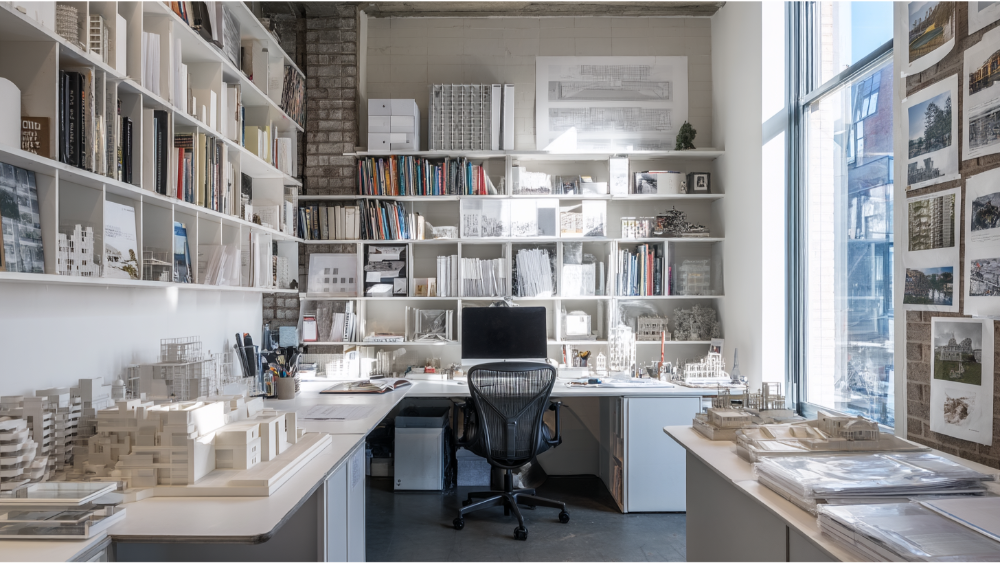Partnered with #1 ADU Builders
Contact Golden State
Drop us a line! We look forward to discussing your next project with you!
Cut the chase! Schedule a face-to-face virtual meeting with us today to dive into your project's next steps.
For our returning clients, experience our streamlined, contact-free project proposal process. Simply fill out our short project questionnaire, and we'll deliver your project proposal within 72 hours.
Contact Us:
Follow Us:

- Golden State Design & Engineering
- Comment 0
Architect vs Engineer: Understanding the Key Differences in Building Design
If you’re planning to build a custom home, construct an ADU, or develop a multi-family property, one of your first questions might be: Do I need an architect or an engineer? The truth is, most construction projects in the construction industry require both. Architects and engineers play essential roles in designing and building structures, and understanding the key differences between the two professions helps you make informed decisions from day one.
At Golden State Design & Engineering (GSDE), we combine architectural creativity with engineering precision to deliver smarter, more efficient outcomes. This article breaks down the distinct responsibilities, training required, and deliverables of each role, why collaboration is crucial, and how GSDE streamlines the construction process by offering integrated services under one roof.
What Do Architects Do?

Architects Design the Vision
Architects are the visionaries behind the look, feel, and function of a structure. They consider spatial relationships, user experience, sustainability, and local context while creating buildings that reflect the values and needs of their clients. Whether it’s a modern farmhouse, a hillside ADU, or a multi-family complex, architects design with form and function in mind.
Registered Architect Qualifications
To become a registered architect, a professional must complete a bachelor’s degree in architecture (often followed by a master’s degree), complete thousands of hours of practical experience under supervision, and pass the Architect Registration Examination. This path includes training required in design software, drawing plans, building codes, lighting systems, and construction materials.
In California, the licensure process is overseen by the California Architects Board, and the educational standards align with the National Council of Architectural Registration Boards (NCARB).
Architects in the Construction Process
Architects and engineers often work together closely during the early phases of building design. The architect leads the design process, which includes concept development, 3D modeling, and presenting ideas to clients. Architects also:
- Develop construction plans
- Create detailed renderings
- Choose materials based on aesthetics and performance
- Coordinate with structural and mechanical engineers
- Ensure compliance with local building codes
Their tools often include computer aided design (CAD) programs like Revit, AutoCAD, and SketchUp.
When You Need an Architect
You should hire an architect when:
- Your project requires a creative or custom design
- The structure must fit into a unique site or neighborhood
- Zoning, height restrictions, or aesthetic regulations are factors
- You want a structure that enhances livability, sustainability, and value
Architects are not just artists. They are licensed professionals who apply science and must solve problems creatively while adhering to strict regulations and construction realities.
What Do Engineers Do?

Engineers Bring the Vision to Life
While architects design the vision, engineers make sure that vision can actually stand up, perform safely, and meet all technical and legal requirements. There are several types of engineers involved in construction and infrastructure projects, including:
- Civil engineers: Handle site development, grading, drainage, roads, and utility systems
- Structural engineers: Ensure the building can withstand loads, earthquakes, and natural forces
- Mechanical engineers: Design HVAC, air conditioning, and ventilation systems
- Electrical engineers: Manage lighting, power distribution, and safety systems
At GSDE, our integrated team includes both civil and structural engineers who work in sync with our architects.
Engineer Qualifications and Training
Most engineers begin with a bachelor’s degree in civil, structural, or mechanical engineering. After completing their degree, they must pass the Fundamentals of Engineering (FE) exam, gain at least four years of practical experience, and pass the Professional Engineer (PE) exam. Some may also take an engineering exam to specialize in structural or mechanical systems.
This process qualifies them as engineering managers or senior-level professionals capable of signing off on final designs and assuming legal responsibility for their work.
Engineers in Construction Projects
Engineers are heavily involved in later stages of the construction process. Their responsibilities include:
- Performing structural calculations and load analysis
- Drafting technical drawings
- Selecting materials based on strength, durability, and cost
- Ensuring compliance with state and local building codes
- Coordinating with architects and contractors during construction
- Using tools like Civil 3D, RISA, and structural analysis software
In California, civil engineers must also ensure projects meet environmental regulations, drainage requirements, and fire safety access.
When You Need an Engineer
Hiring an engineer is essential when:
- You need to verify the safety and durability of a design
- Your site has challenging slopes, soil types, or drainage issues
- Your project involves new roads, sidewalks, or other infrastructure projects
- You’re dealing with seismic, wind, or lateral force considerations
Whether you’re building a single-family home or a commercial complex, a professional engineer plays a vital role in ensuring everything works, holds up, and meets code.
Architect vs Engineer: Key Differences Explained

While architects and engineers work together, they have very distinct responsibilities, career paths, and areas of expertise. Here’s a closer look at their key differences:
| Category | Architect | Engineer |
|---|---|---|
| Focus | Aesthetics, layout, spatial planning | Safety, stability, technical performance |
| Education | Architecture bachelor’s degree, ARE exam | Engineering bachelor’s degree, PE license |
| Tools | Revit, SketchUp, Adobe Suite | AutoCAD, RISA, Civil 3D |
| Deliverables | 3D models, floor plans, material specs | Calculations, system specs, construction plans |
| Role | Visionary and space planner | Analyst and system integrator |
| Licensing | Registered architect (ARE) | Professional engineer (PE) |
Architects and Engineers Collaborate on Projects
In most construction projects, success depends on how well architects and engineers collaborate. From concept to construction, the two professions must:
- Coordinate during the design process
- Share updates on code changes and cost constraints
- Resolve design conflicts in real time
- Use BIM and computer aided design tools to align drawings
At GSDE, we ensure tight coordination across disciplines so projects move forward with minimal friction and reduced delays.
Common Scenarios: Who You Need and Why
Custom Home Design
For a custom home, you’ll need both a registered architect and a structural engineer. The architect will help you shape the style, layout, and livability of the home. The engineer will ensure the building structures meet all codes and can support environmental loads like wind or earthquakes.
Land Development and Multi-Family Projects
For these complex construction projects, you’ll rely heavily on civil engineers for:
- Parcel mapping and subdivision
- Drainage and grading design
- Utility and roadway layout
Meanwhile, architects design the units and shared spaces, and structural engineers ensure safety at scale.
Why GSDE Combines Architecture and Engineering

Streamlined Project Management
When you work with GSDE, you gain a single source for design, engineering, and permitting. This reduces handoffs, miscommunication, and timeline creep. Our teams monitor project progress, flag issues early, and offer integrated project management.
Cost Efficiency
By housing both roles under one roof, we reduce back-and-forth, prevent change orders, and optimize design for constructibility. We also generate more accurate cost estimates early in the project.
Innovation Through Integration
Our interdisciplinary team blends architecture, engineering, and permitting expertise to deliver smarter solutions. For example, we optimize site orientation for solar gain, select materials for both performance and appearance, and integrate sustainable systems across disciplines.
Frequently Asked Architect vs Engineer Questions
What’s the difference between an architect and an engineer?
The key differences come down to focus and responsibility. Architects shape the design and appearance of a building, while engineers ensure it’s safe and code-compliant.
Can one professional do both jobs?
In theory, some professionals study both fields, but most construction projects require licensed experts in each role. GSDE provides a team of experienced architects and engineers to cover every detail.
How much do architects and engineers charge?
Fees vary depending on project scope, but architects may charge a percentage of construction cost (usually 5–15%), while engineers often charge flat rates based on services provided.
Are both needed for permits?
Yes. In California, most jurisdictions require stamped plans from both a registered architect and a professional engineer to issue building permits.
What’s the job outlook?
According to labor statistics, the demand for civil engineers, structural engineers, and architects continues to rise, especially in California’s growing housing markets.
Final Thoughts
Whether you’re building a home in Folsom, developing townhomes in Santa Rosa, or designing an ADU in Sacramento, understanding the key differences between architects and engineers is essential. One designs the form, the other ensures it stands. Together, they make your vision buildable.
At GSDE, we eliminate the guesswork by offering both services through a single, collaborative team. Our professionals manage every detail of the construction process, from concept to permit to final inspection. With experience in custom homes, ADUs, subdivisions, and infrastructure projects, we’re ready to deliver value through every phase of development.
Let’s start building smarter. Contact GSDE today to discuss your project goals.
#NAICS’s:
- 541310 Architectural Services &
- 541330 Engineering Services
DUNS NO:
- 119132267
#SIC’s
- 8712 Architectural Services &
- 8711 Engineering Services
Cage #
- 9R4L5
#UNSPSC’s:
- 81101500, 81101502, 81101505, 81101508, 81101526, 81101533, 81101522

